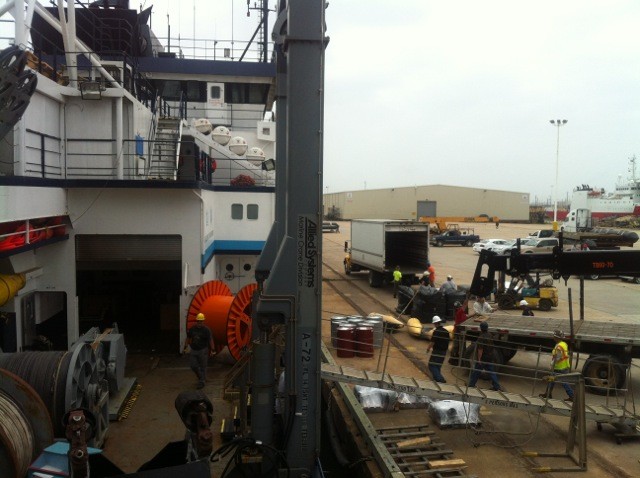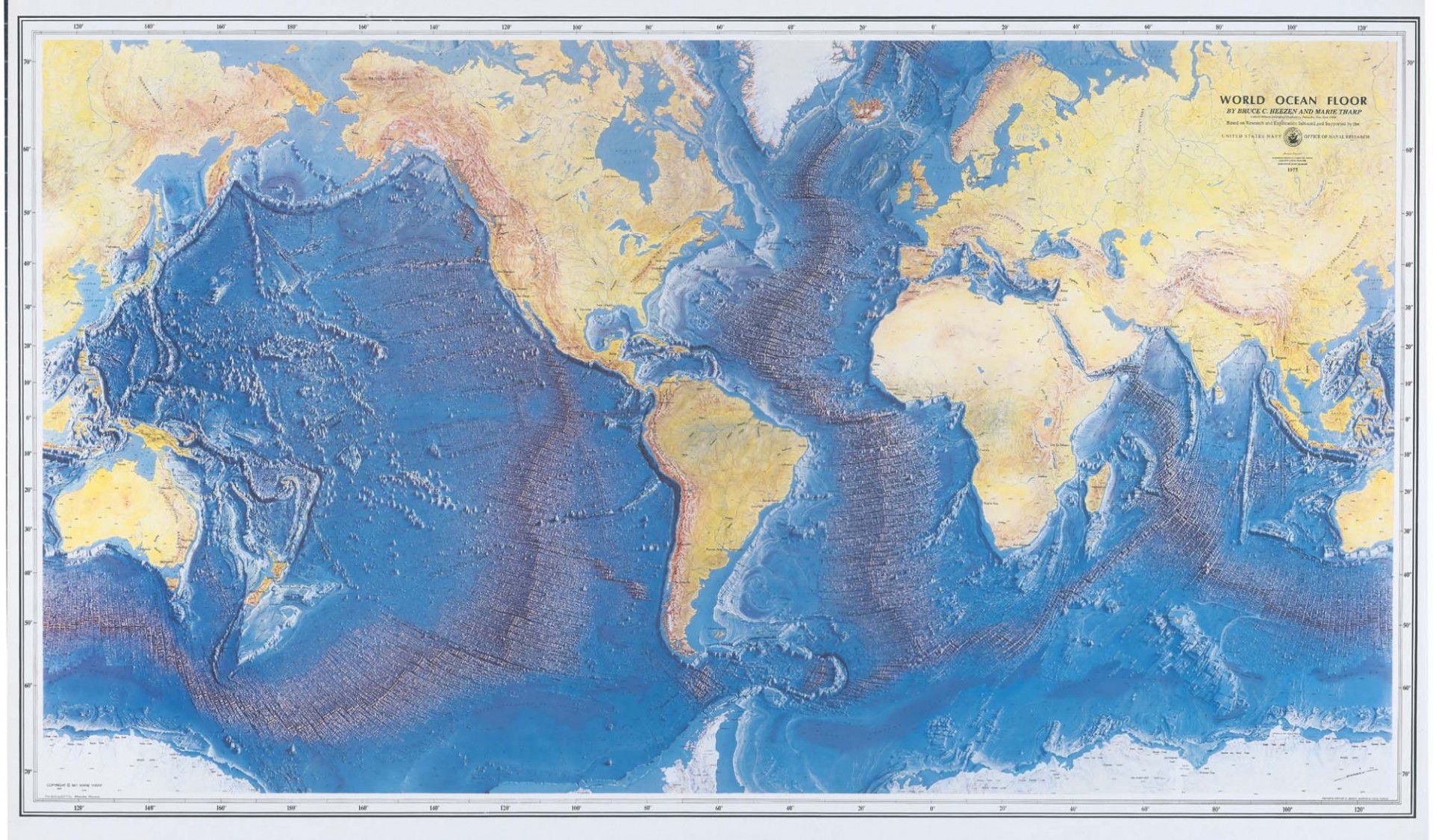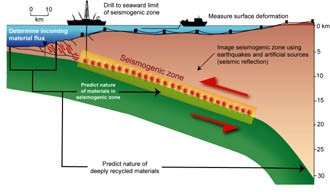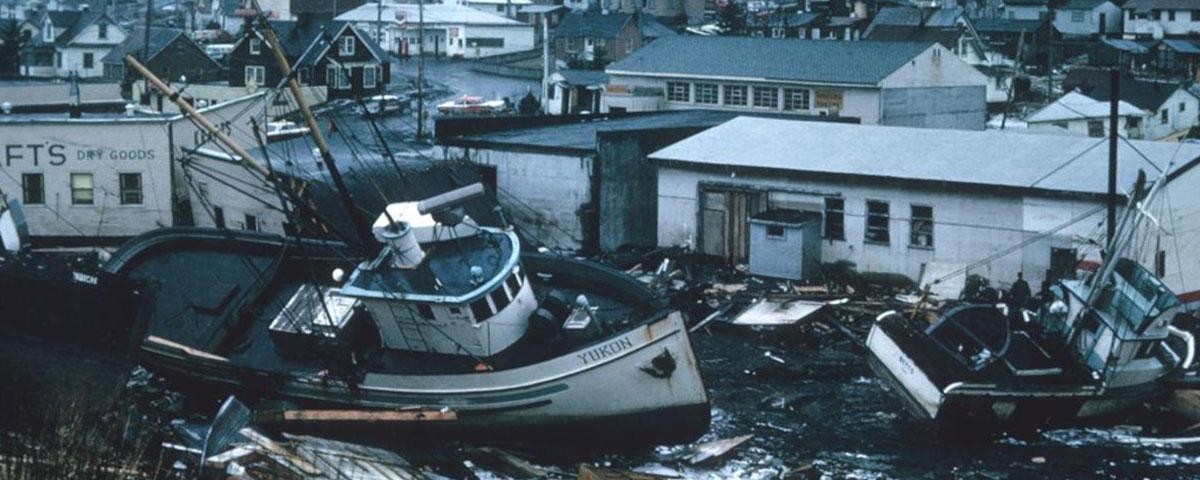Cruise Planning

Preparing for a seagoing expedition involves many months (often years) of planning. There are many forms and documents to prepare, many criteria to be met and logistical issues to sort out, and there are even issues of personal preparation.
The most successful research cruises are typically the ones that are planned early, with an awareness of both the big picture and the fine details. The Lamont Office of Marine Operations takes care of the operations on the R/V Langseth.
To gain a better sense of the operational preparation that goes into every Langseth mission, see this Sample Langseth Science Support Plan (PDF).
Coming Soon
Coming Soon
Coming Soon
Coming Soon
The Lamont-Doherty Earth Observatory (LDEO) takes the responsibility of protecting marine mammals very seriously.
In the course of conducting acoustic research, the R/V Marcus G. Langseth operates an array of sound sources generated by compressed air (air guns) to map the structure of the Earth's crust on and below the sea floor. The maps generated allow a better understanding of how the planet functions from natural hazards to climate.
There is a paucity of data on how different sound levels radiate in different geographical surroundings, and how marine mammals may respond to these different levels. A report from The National Academies' National Research Council states that the "Impact of noise on marine mammals remains unclear." Funds should be designated for "research into how human-generated sounds may affect marine mammals," and "needed are better models to predict the noise levels that will be generated in the ocean by particular human activities."
The need for definitive data on the impact of human-made acoustic sources on marine mammals is of critical concern to the oceanographic community. Lamont is engaged in programs to further scientific understanding of marine mammal response to acoustic research, and is working with specialists in the field of marine mammals to help inform future researcher programs.
Standard operating procedure requires that research ships obtain permission to operate in national waters of any country, and US law requires compliance with the Marine Mammal Protection Act. A detailed environmental assessment statement is produced to determine that no significant danger will occur to the marine population. These US and foreign permits/permissions are sought over several months, simultaneously. The National Marine Fisheries Service, part of the National Oceanic and Atmospheric Administration, issues permits to vessels whose operations may "harass" marine mammals, an industry term describing any activity that alters a mammal's normal behavior. The Service issues guidelines as to the radius in which sound pulses might be received at various high decibel levels. These radii are calculated with computer models.
Prior to each expedition, knowledge of mammal activities known to the area is established so that research can be scheduled to avoid significant seasonal events, e.g. migration and calving. The ship in question observes an established safety zone for mammals appropriate to the type of seismic activity to be conducted, and in the event of a sighting, specific procedures are outlined to ramp down research so that mammals can safely move through the area. This monitoring of the safety radius includes the use of special high-powered binoculars, as well as towed sonar array used to listen for marine mammals. LDEO is recognized as a leader in the development and implementation of marine mammal mitigation.
PROCEDURES
LDEO requires that vessel operations employing acoustic (seismic) sources adhere to a strict set of procedures designed to minimize interactions between the sources and marine mammals. Recognizing that different species of marine mammals may be sensitive to different sound frequencies and decibel levels, the researchers are seeking to better understand how strongly and how far sound pulses travel, both in shallow and deep water. Below is a brief summary of LDEO's "Marine Mammal Protection Procedures:"
Pre-Cruise Procedures
- The LDEO Marine Science Coordinator obtains detailed schedules of proposed research activities and routes, and specifications of the equipment to be deployed.
- Knowledge of mammal activities known to the area is established and research is scheduled to avoid significant seasonal events such as migration, breeding, and calving.
- An Environmental Assessment is written and permit is applied for.
- Trained marine mammal observers are appointed.
Cruise Procedures
(to be applied according to geographical area and need as determined by the National Marine Fisheries Service permit requirements)
- Before the seismic array is deployed, marine mammal observers deploy a hydrophone streamer for detecting and monitoring marine mammals acoustics.
- The vessel observes an established safety zone for marine mammals appropriate to the type of acoustic activity to be conducted.
- The marine mammal observer ensures that no mammals are within the zone for at least one half hour prior to seismic operations.
- The sound source is initially activated at the lowest possible source levels and increased at a prescribed rate (not to exceed 6 dB per 5 minutes) to allow marine mammals in the vicinity to detect, track, and avoid the sound.
- All marine mammal sightings are reported; details regarding the sighting (e.g. species, time, activities, number of individuals, location with reference to the vessel) are reported on the official sighting form and database.
- When a designated mammal (or mammals) is observed to be within or about to enter the safety zone, the sound sources are to be deactivated immediately; once the mammals are clear of the zone the sound sources can be activated at the lowest source levels and slowly increased to prescribed rates.
Related information: Discovery of Sound in the Sea

Heezen and Tharp Seafloor Map, 1977
Acoustic and seismic research has contributed more to understanding Earth’s physical history, natural hazard potential, and climate systems than perhaps all other scientific technology combined. It gives scientists the ability to map the ocean floor, a tool that revolutionized Earth sciences with the discovery that continents break apart and tectonic plates shift. It revealed the globe-encircling volcanic mid-ocean ridge system, earthquake-producing boundaries of crustal plates, drowned shorelines, and submarine landslide deposits.
The deep interior of the oceans is as difficult for humans to reach as is deep space. The opaqueness of seawater to the passage of light or radio waves makes it difficult to efficiently study the seafloor or the deep interior of the oceans with either optical methods like cameras, or with radar or microwave radiation such as that used in satellites. Sound, however, travels freely through the oceans and can be used to measure topography and to map geology, ocean temperatures, and currents.
Today, marine acoustic surveys are fundamental tools guiding explorations of this planet. Numerous scientific research vessels from around the world are engaged in studying all of the Earth’s oceans and the underlying seafloor. The data collected are critical to informed decision- making regarding our future.
Continental Margins

Processes in subduction zones need to be better understood in order to more accurately predict and calculate earthquake risks near such areas. Credit: Olaf Svenningden, MARGINS
Continental margins provide the Earth's principal concentration of hydrocarbon and mineral resources, earthquakes, landslides, and volcanic and climatic hazards. They are also the regions containing the greatest human population density. Despite the societal and economic importance of margins, many of the mechanical, fluid, chemical, and biological processes that shape them are poorly understood. Scientists are using acoustic data to create maps of submerged continental margins around the globe, to reconstruct the history of ocean evolution, to understand the processes involved in creating zones of enormous earthquake and volcanic activity, and to help predict when and where future movements of the Earth will occur.
Earthquakes

Throughout its history, Turkey, which lies above a seismically active plate boundary, has suffered enormous consequences from high magnitude earthquakes. In two 1999 earthquakes, tens of thousands of lives were lost throughout a 100-mile-long corridor including Istanbul and regions to its east. Much of the infrastructure was flattened, including the structure seen here. Photograph: Leonardo Seeber
From sub-seafloor imaging, scientists can compile records of the timing and magnitude of historical earthquakes. Dating these earthquakes can inform us of the time intervals that occurred between quakes, and potentially signal the next one. Research in the Marmara Sea examined numerous earthquakes from the Northern Anatolian Fault. One of these quakes killed nearly 20,000 people in Istanbul, Turkey in August 1999. Marine research led scientists to conclude that another event was likely to strike the same region. Based on the resulting scientific report, engineers closed school buildings that had been only slightly damaged in this August earthquake. Three months later, the predicted earthquake did strike and flattened several buildings. Similar research is now taking place off the coast of Seattle, Washington, where a long history of major earthquake activity has been documented.
Landslides and Tsunamis

Tsunamis are devastating to coastal towns, which are typically the most populated regions of a country. In 1964, a deadly tsunami overtook the shores of Kodiak, Alaska with such force that fishing boats were catapulted onto land.
In 1998, over 2,000 lives were lost when an earthquake-generated submarine landslide caused a tsunami along the coast of northern Papua New Guinea, a region known to be seismically active. To understand the dynamics of the events that created these deadly waves, researchers aboard the R/V Maurice Ewing used acoustic technology to map the ocean floor landscape. These maps are being applied to wave studies to understand the forces that generate such deadly tsunamis, which can occur in many coastal regions around the globe. A scientifically based understanding of the potential for natural disasters is indispensable for regional planners charged with developing appropriate disaster response measures in populated areas. Through underwater mapping of the ocean floor around the Hawaiian Islands, researchers discovered that over time, enormous chunks of land have broken away, sliding into the ocean, possibly causing massive tsunamis. Our understanding of the history of land change in this region can be used to forecast and plan for future inevitable natural hazards.
Fishing
Researchers mapping the underwater landscape around Cape Cod and Nantucket discovered excessive scour marks along the ocean floor, resulting from the fishing industry's use of dragnets. These findings have informed the controversy of over-harvesting this region of the ocean, which has seen critical declines in cod, haddock, and yellowtail flounder.
Energy, Climate, Natural Hazards
Marine acoustic surveys have pinpointed locations on the seafloor where natural gas seepages, some quite violent, have occurred. Accumulation of gas at shallow depths may cause large-scale collapses of continental margins. Knowledge of seepage locations is important, not only to regional planning, but also to the understanding of how new biological communities become established on the sea floor. Additionally, methane, a principal and abundant gas in these seepages, is a potent greenhouse gas implicated in climate change. Researchers are learning how to calculate gas quantities at seepage locations and use these numbers in climate change scenarios. Methane is also a potential future energy resource, although it is currently difficult to exploit.

